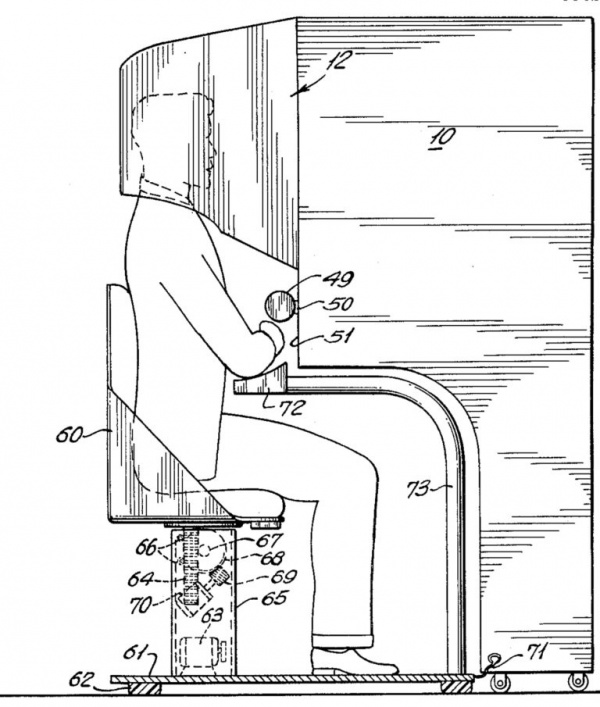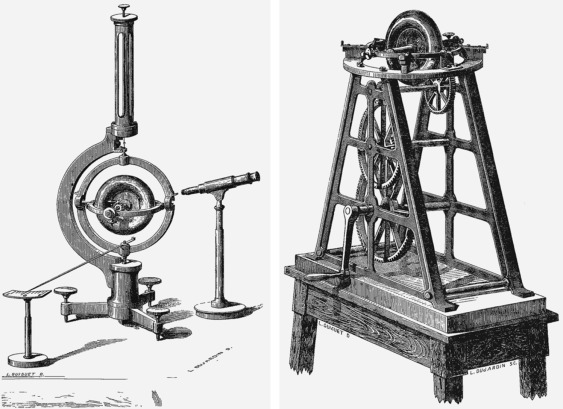History of Virtual Reality: Difference between revisions
(Created page with "''This article was originally published at https://www.matrise.no/2018/07/the-history-of-virtual-reality/'' ''It is reproduced here with the permission of the author.'' '''Th...") |
No edit summary |
||
| Line 2: | Line 2: | ||
''It is reproduced here with the permission of the author.'' | ''It is reproduced here with the permission of the author.'' | ||
''' | '''THE HISTORY OF VIRTUAL REALITY''' | ||
by Joakim Vindenes | by Joakim Vindenes | ||
| Line 36: | Line 36: | ||
The idea of the Sensorama, or VR in general, can as many other innovative future-defining ideas, be found in science fiction literature. Before its conception, in the 1930s, the science fiction writer Stanley G. Weinbaum introduced the idea of «Pygmalion’s Spectacles». By wearing these, the user could experience a fictional, or virtual world, with holographs, smell, taste and touch, and make the virtual come alive. Pygmalion, which «Pygmalions Spectacles» were named after, were a Greek sculptor who fell in love with his sculpture, and so begged Venus that it would come alive. The Myth sheds an interesting light on VR as an ultimate dream of humanity, to create realities for ourselves to inhibit, or to create images in the format of reality. | The idea of the Sensorama, or VR in general, can as many other innovative future-defining ideas, be found in science fiction literature. Before its conception, in the 1930s, the science fiction writer Stanley G. Weinbaum introduced the idea of «Pygmalion’s Spectacles». By wearing these, the user could experience a fictional, or virtual world, with holographs, smell, taste and touch, and make the virtual come alive. Pygmalion, which «Pygmalions Spectacles» were named after, were a Greek sculptor who fell in love with his sculpture, and so begged Venus that it would come alive. The Myth sheds an interesting light on VR as an ultimate dream of humanity, to create realities for ourselves to inhibit, or to create images in the format of reality. | ||
[[File:Pygmalion_II_.jpg |600px]]<br /> | |||
''Pygmalion, which «Pygmalions Spectacles» were named after, were a Greek sculptor who fell in love with his sculpture. He begged Venus that it would come alive. Painting by Jean-Baptiste Regnault.'' | |||
'''Information Technology''' | |||
To take a leap towards another paradigm shift in VR tech, we must enter the land of 1s and 0s. The Stereoscope slowly moved from drawn images, to photographs, and further to moving images with the Sensorama. None of these, however, supported spherical environments that could be perceived in all their 360˚. To achieve this, certain sensors and further computation based on their sensory input has been necessary. The most important and interesting of these sensors, has been the Gyroscope. | |||
[[File:Foucault_Gyrscope.jpg|600px]]<br /> | |||
Revision as of 06:32, 6 August 2018
This article was originally published at https://www.matrise.no/2018/07/the-history-of-virtual-reality/ It is reproduced here with the permission of the author.
THE HISTORY OF VIRTUAL REALITY by Joakim Vindenes
In recent years, Virtual Reality (VR) technology has finally reached the masses. 2016 was called “The Year of VR” as several actors released their Head-Mounted Displays (HMDs) on the consumer market. While HTC, Oculus and Playstation delivered high quality HMDs that require external computers to run, the year also opened up for high quality mobile VR. Both Google with their Daydream View and Samsung/Oculus with their GEAR VR have provided an easier step for consumers to enter the world of VR. These mobile VR solutions offer better internal measurement units than the simpler Cardboard devices, and also feature simple controllers for interaction. We now see the market spreading out both in quality and accessibility: in 2018 we have both seen the coming of the HTC Vive Pro, a more expensive high-end HMD with increased resolution, and the Oculus Go, which is a reasonably-priced ($200) stand-alone 3DOF (3 Degrees of Freedom) HMD for the starters.
It is natural to wonder how all of this started. Why did we for instance not see much VR before 2016? When it now seems to be relatively easy for commercial actors to push out HMDs down to $200, why did it not happen sooner? Of course, we have had Oculus’ development kits since 2013 — but even this is very recent. When Google released their Cardboard (a simple HMD made out of cardboard and some lenses), it seemed incredilous that VR could be attainable for the smartphone for only 50 cents. This, however, only points us toward how fascinatingly simple the underlying pinciples of VR technology actually are.
In this entry, we will trace the VR tech we see today back to its roots. We will go back about two hundred years, and work ourselves jumpingly forward to the very recent innovative technologies.
Stereoscope

A drawing of the Lothian Stereoscope, released in 1895; one of many different models.
In 1838, Sir Charles Wheatstone developed what would be the first Stereoscope. Even before the camera was invented, people were seeing (drawn) images with 3D effect through stereoscopes. Stereoscopy, that is, perceptory illusion of depth, is achieved by displaying a slightly different segment of an image to each eye. Wheatstone achieved this by separating the two images by a piece of wood, and providing a lens directing the light, between each eye and the corresponding image. While looking through the stereoscope, our brains perceive the two images as one image, with the added 3D effect due to the varying segments of the images. This effect is simply caused by an utilization of how our eyes and brain work, by combining the sensory data from each eye into one. We may, for instance, most likely be able to recall sometimes «seeing double», when our brains have yet not our varying visual impressions.
Since Wheatstone, different stereoscopes have been produced all the way up to the Google Cardboard or other HMDs; which instead of drawn images, or later photographs, utilizes a screen to deliver the imagery to the eyes. Actually, in the early 1900s, Stereoscopes functioned as home entertainment devices, and «stereo cards» such as the image seen below could be purchased from photography companies.

Stereo card of St. Peters Church in the Vatican. Such cards, picturing tourist attractions all over the world, could be purchased and viewed at home in a Stereoscope.
Stereoscopes and modern day Virtual Reality HMDs share the essential feature of stereoscopic depth illusion (3D). Apart from that, however, a lot has obviously happened since 1838, which we now regard as essential for the feeling of presence and realism, and which makes the technology capable of simulating realities. The most important of these have been moving images, 3D environments, interaction, and 360 degrees of orientation. With the stereoscope, images very static in every sense.
Sensorama
In the mid 1950s, however, some people saw the opportunity to spice up their stereoscopes a bit. A bold attempt at enrichening this, was the Sensorama. In addition to providing a stereoscope with motion pictures in 3D and color, all quite revelutionary, the device had fans for simulating wind, odor transmitters for smell of the environment, stereo sound, and even a moving chair!

The Sensorama, or «Experience Theather». Illustration from Morton Heilig’s 1962 US Patent.
Pygmalion’s Spectacles
The idea of the Sensorama, or VR in general, can as many other innovative future-defining ideas, be found in science fiction literature. Before its conception, in the 1930s, the science fiction writer Stanley G. Weinbaum introduced the idea of «Pygmalion’s Spectacles». By wearing these, the user could experience a fictional, or virtual world, with holographs, smell, taste and touch, and make the virtual come alive. Pygmalion, which «Pygmalions Spectacles» were named after, were a Greek sculptor who fell in love with his sculpture, and so begged Venus that it would come alive. The Myth sheds an interesting light on VR as an ultimate dream of humanity, to create realities for ourselves to inhibit, or to create images in the format of reality.

Pygmalion, which «Pygmalions Spectacles» were named after, were a Greek sculptor who fell in love with his sculpture. He begged Venus that it would come alive. Painting by Jean-Baptiste Regnault.
Information Technology
To take a leap towards another paradigm shift in VR tech, we must enter the land of 1s and 0s. The Stereoscope slowly moved from drawn images, to photographs, and further to moving images with the Sensorama. None of these, however, supported spherical environments that could be perceived in all their 360˚. To achieve this, certain sensors and further computation based on their sensory input has been necessary. The most important and interesting of these sensors, has been the Gyroscope.
